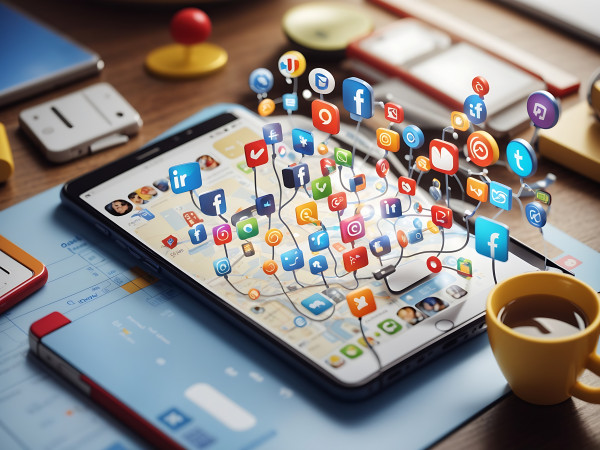COVID-19 has brought about the greatest change in global working conditions since World War II. 2020–2021 was a record-breaking year for many businesses, with most employees forced to work remotely due to homestay mandates.
Pollution levels were at an all-time low as people stopped commuting. And productivity was at an all-time high.
Now, companies are demanding their employees return to their offices or risk being fired.
What happened?
The Problem With Remote Work
Remote work is a fantastic concept in theory, but it brings new problems to the current economic system that many aren’t prepared to face.
Despite businesses reporting their highest profits, employees silently suffered the biggest threat to their mental health: isolation.
Introverts thrived, but extroverts suffered. Virtual meetings completely removed the need for human contact. The lack of a commute between work and home blurred the lines between healthy work-life balances. This forced many people to work longer hours than they normally do. The perfect home office was also constantly interrupted at the worst times by family members.
All of this led to the development of the hybrid work model, which tries to minimize the problems that come with working from home while taking advantage of the flexibility it offers.
The Hybrid Work Model
Most companies that switched to the remote work model found that they needed a lot less office space. Businesses could make more money if they cut down on the size of their offices and stopped spending money on equipment and office supplies.
A survey conducted by Cisco found that nearly 53% of all organizations were looking into the hybrid work model as a means to reduce their office footprint. With the hybrid work model, your office is just a central meeting place for your workers. Your available talent pool now sits far beyond state lines since an employee only needs a computer and an internet connection to contribute to your workplace.
While the fully remote model eliminates office culture and water cooler gossip, the hybrid model allows employees to choose their own schedules. Introverts can choose to help from a distance, while extroverts can choose to meet with their coworkers so they can use their strengths to help. Businesses that have already rented commercial property have to justify their costs on paper as well. Without the hybrid work model, a business’s investments in its office space vanish.
The hybrid model requires simply redesigning your existing office space to make things work. Reducing the number of people in the office reduces the spread of future pathogens, which will help companies comply with future stay-at-home mandates as well.
Let’s look at the two most prominent hybrid models available for businesses.
The Office First Model
This model allows employees to work in the office three days a week while retaining the option to work remotely for the remaining days.
Google is a huge proponent of this model because they are invested in protecting their company culture, which they have worked to cultivate for decades.
However, you need a strong corporate culture to align your schedules because you can’t forecast how many employees will be at the office at any given time.
The Remote First Model
In this model, employees spend most of their time working from home and only occasionally go to co-working spaces to build teams, share ideas, and get training. Twitter is a huge proponent of this model and one of the fastest to adapt to the hybrid requirements of its employees.
The first model does not require rented office space. It depends on team members to get together wherever and whenever they see fit. This model has become very popular among people who want to completely get rid of their office footprints while also making their workplaces more creative. With this model, it is much harder to keep office culture, so a strong company culture is needed to keep a sense of community across internal message boards and communication tools.
Is The Hybrid Model Right For Your Business?
Dimension Research, a leading market research group, found that most employees in tech fields see the value of working from home and want to work for businesses that allow them to spend time with friends and family.
More than 53% of large businesses want to reduce costs by reducing their office footprint, with 95% of workers wanting to return to the office only to connect with peers and collaborate.
More than half of the employees today won’t consider working for a business that doesn’t offer flexible timing. Many employees are prepared to leave for greener pastures if their company forces them back into the office.
You should also think about this model if your pool of potential employees is too far away for you to reach. The time your employees spend commuting is unpaid time they are willing to exchange for spending time with their families and improving their mental and physical fitness.
Adopting a hybrid work model allows you to hire workers from all over the world. Small office spaces can be organized on a location-by-location basis to allow for meetups while allowing employees to work from the comfort of their homes.
Conclusion
We’re at a pivotal time in history, and there’s no turning back. The pandemic has accelerated remote work, and we’re in a period right now that economists call the Great Upheaval.
Employees around the world love flexible work and are ready to challenge the concept of a physical office. Companies can give their employees a better balance between work and life without having to pay for it.
Businesses have found that the hybrid model works well for them and makes them more productive at the same time. If your business doesn’t change, you might lose your best employees to companies that are more flexible and offer hybrid work schedules. It’s important to make sure that the right tools are made so that businesses can practice social distance and still be productive. You never know what the future holds or when employees scattered across the map will be the ticket to saving your business.



